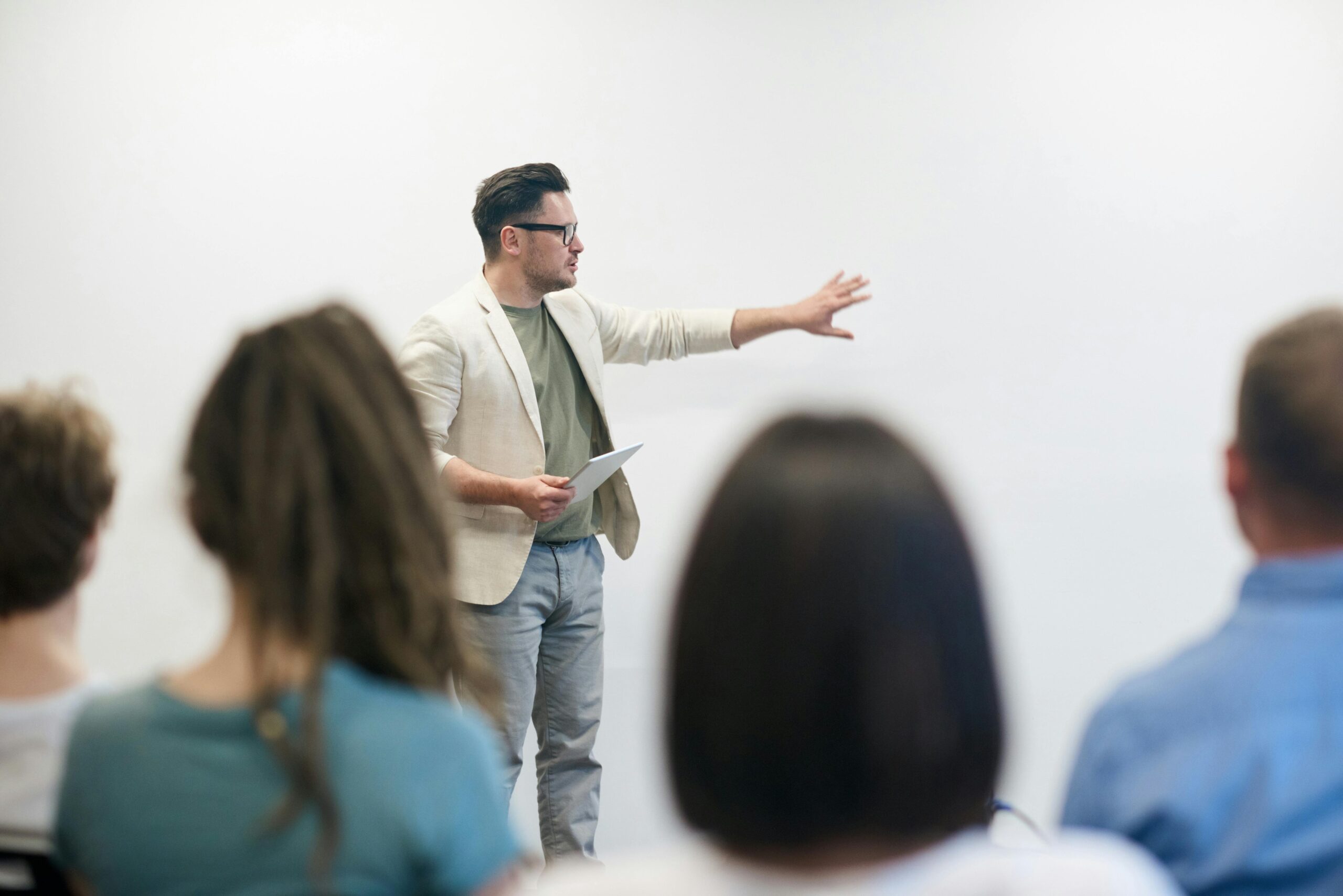PhotoCredit: fauxels.
Science encompasses many subjects, spanning pure sciences, mathematics, engineering, technology, and everything in between those topics. For non-science practitioners, science can be simplified to communicate through numbers, data, experiments, and other elements that may seem dry or complex.
Albert Einstein once remarked, “At most, only a dozen people can understand my theory.” This highlights a common challenge: for a great idea to resonate widely, it must be presented in a way that is simple and accessible. If an idea is overly technical or filled with jargon, its potential to enlighten and educate diminishes. I’m not going to debate Einstein or any scholars concerning this. But let’s make things simpler as AEIOU, as suggested by Burns et al (2003).
A for Attitude
It’s crucial that the audience can relate to the topics discussed. For instance, take climate change, a term widely used today. To truly engage the audience, it must see its relevance to issues that concern their every-day life, such as financial issues, health deterioration, period poverty or the frequency of natural disasters. Connecting scientific concepts to everyday concerns helps bridge the gap between scientists and society.
E for Enjoyment
To engage audiences with scientific ideas, it’s essential to make the material entertaining. When people find science pleasurable, they become more likely to ask questions and critically evaluate claims from reading materials or digital content. As to how art is associated with beauty and entertainment, science may offer similar enjoyment if it’s properly communicated. Whether society agrees or disagrees with any specific issues, sparking interest in discussing the topic is a promising start.
I for Interest
Interest in scientific topics may not always naturally arise among the public. Therefore, scientists and science communicators must actively engage to boost awareness and understanding of science, specifically to their niche. This ongoing effort is crucial for fostering voluntary involvement, sparking curiosity, and cultivating deeper engagement with scientific concepts and discoveries. Extensive outreach and accessible communication methods play pivotal roles in achieving these goals, ensuring that scientific knowledge becomes more relatable and accessible to diverse audiences, especially beneficial to solving their day-to-day issues.
O for Opinion
Engaging in scientific discussions prompts individuals to develop thoughts and curiosity. It is initially biassed by personal experience and perceived benefits. However, through ongoing dialogue and exposure to varied perspectives from experts and peers, individuals can progressively refine their viewpoints and incorporate knowledge gained from robust discourse and applied experiences. This iterative process of critical thinking and informed deliberation strengthens society’s understanding and enhances their ability to make well-rounded judgments on scientific matters.
U for Understanding
As scientific literacy advances in society, people develop their skills to critically evaluate information. This includes the ability to actively conduct self-fact-check and discern credible sources from misinformation, bolstering their overall understanding. It is crucial to acknowledge that significant, long-term impacts of science communication may develop as society reflects on its existing knowledge, encounters new experiences, and restructures its perspectives over time. These ongoing processes contribute to a more nuanced and informed public discourse on scientific issues.
However, adopting the AEIOU approach may not be as simple as it sounds. Science can only be made simpler and well-spoken if and only if ‘scientific society’ is ready to communicate it in ‘human language’. By breaking the language barriers of experts and non-scholars and being more considerate in catering community’s issues. Moreover, science is increasingly interdependent with business and industry, where society often serves as another testing ground for scientific innovations.
Despite its advancements, science faces controversies, clashes of opinions among scientists, and instances of research misconduct. Such challenges can undermine public trust in experts and tarnish the reputation of science. It raises the question whether scientists need a third-party communicator or if it is imperative for them to take a direct communication approach, especially within their communities.
Eventually, the overarching goal is to uphold the rights of all parties involved. Scientists should have the opportunity to conduct research in conducive environments and convey their findings distinctly to society. Simultaneously, civil society deserves to have its issues addressed and voices heard by the scientific community.
Achieving this requires a concrete medium to bridge the gap between various stakeholders, communicators, media practitioners, authorities, funders, and others. They must maintain mutual understanding and set aside personal biases. By doing so, the AEIOU approach can be implemented seamlessly, ensuring that it meets the diverse needs of all individuals and organizations involved in scientific communication. This collaborative effort is essential for fostering a more accessible and effective exchange of scientific knowledge, benefiting both scientists and society at large.


